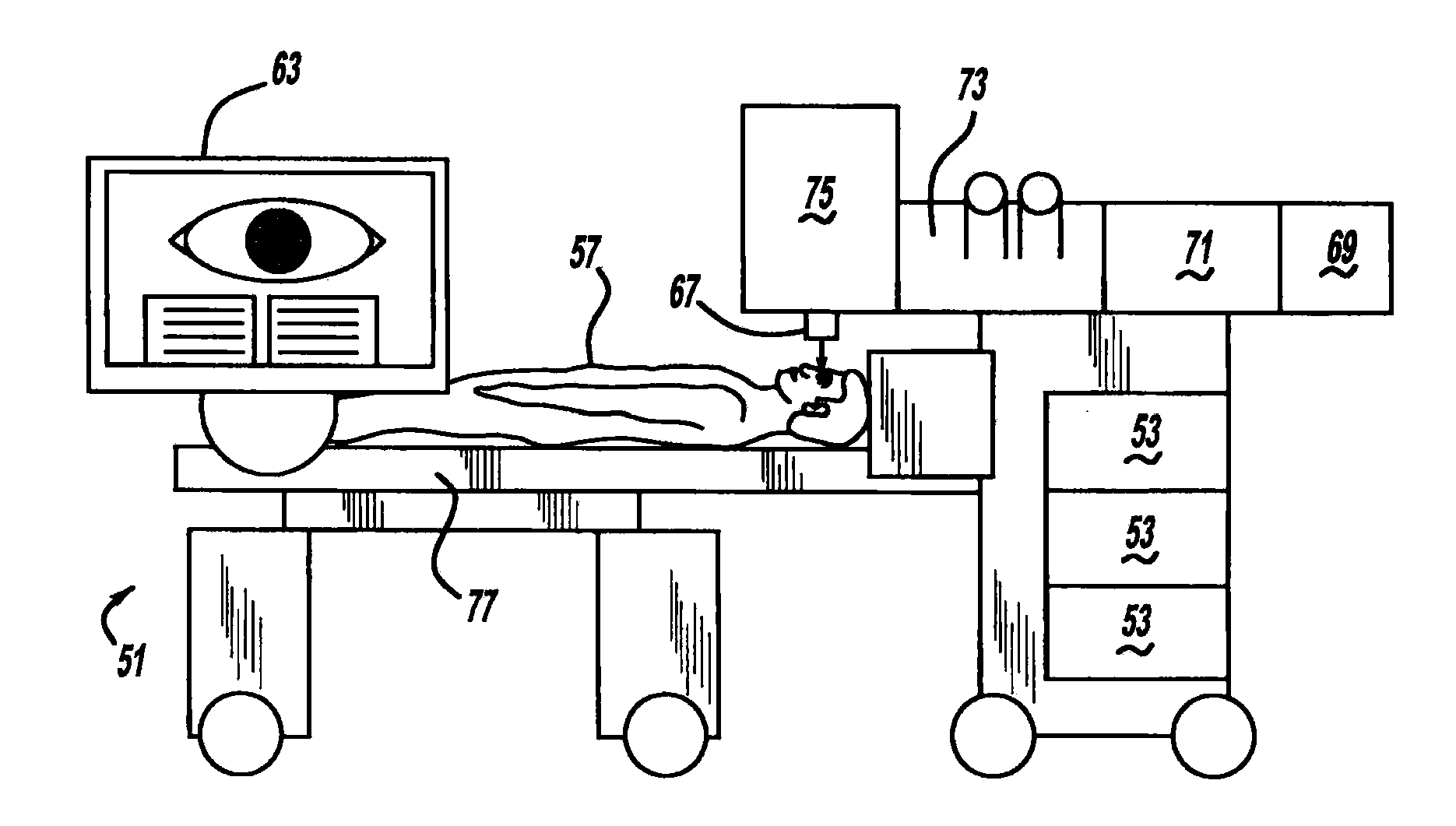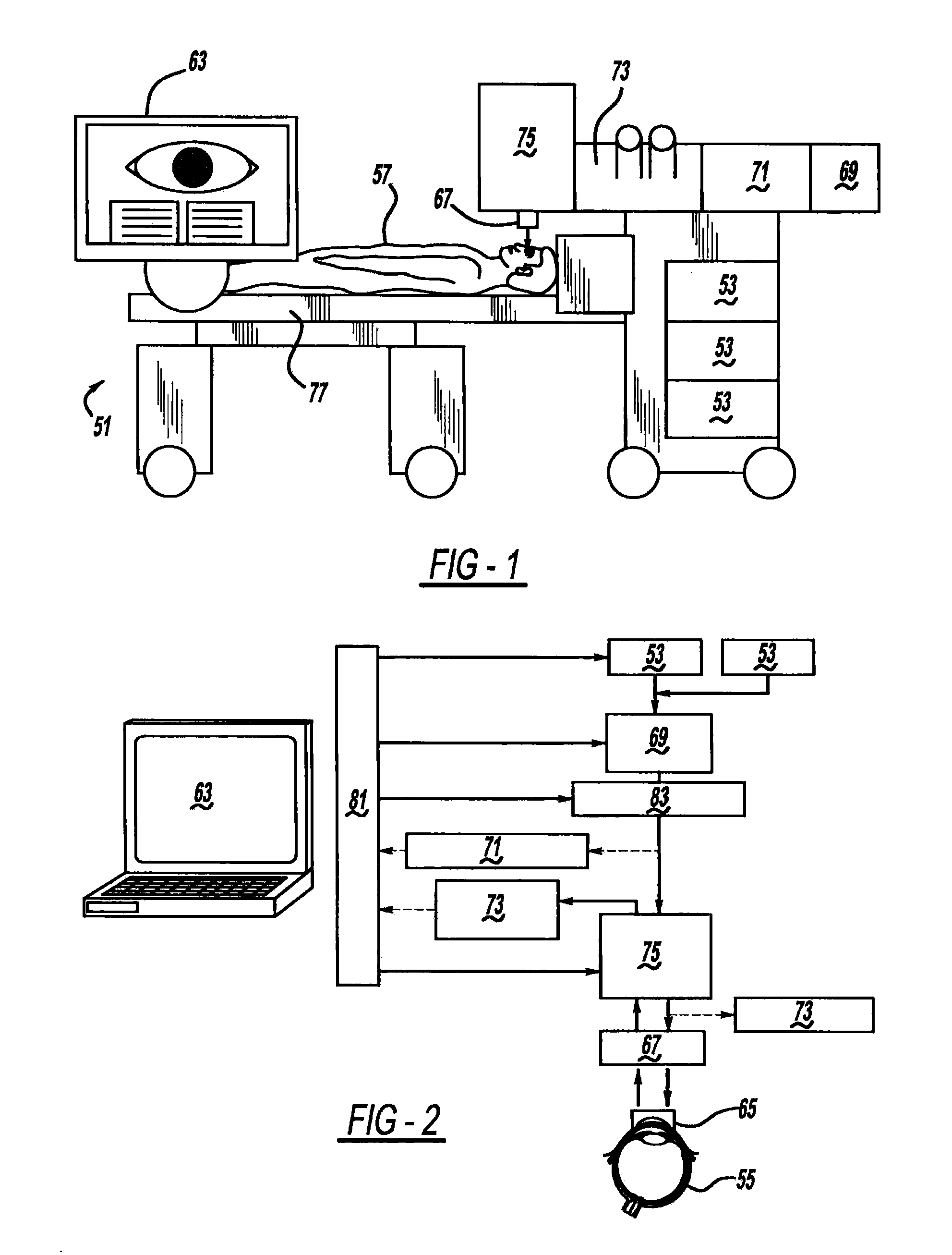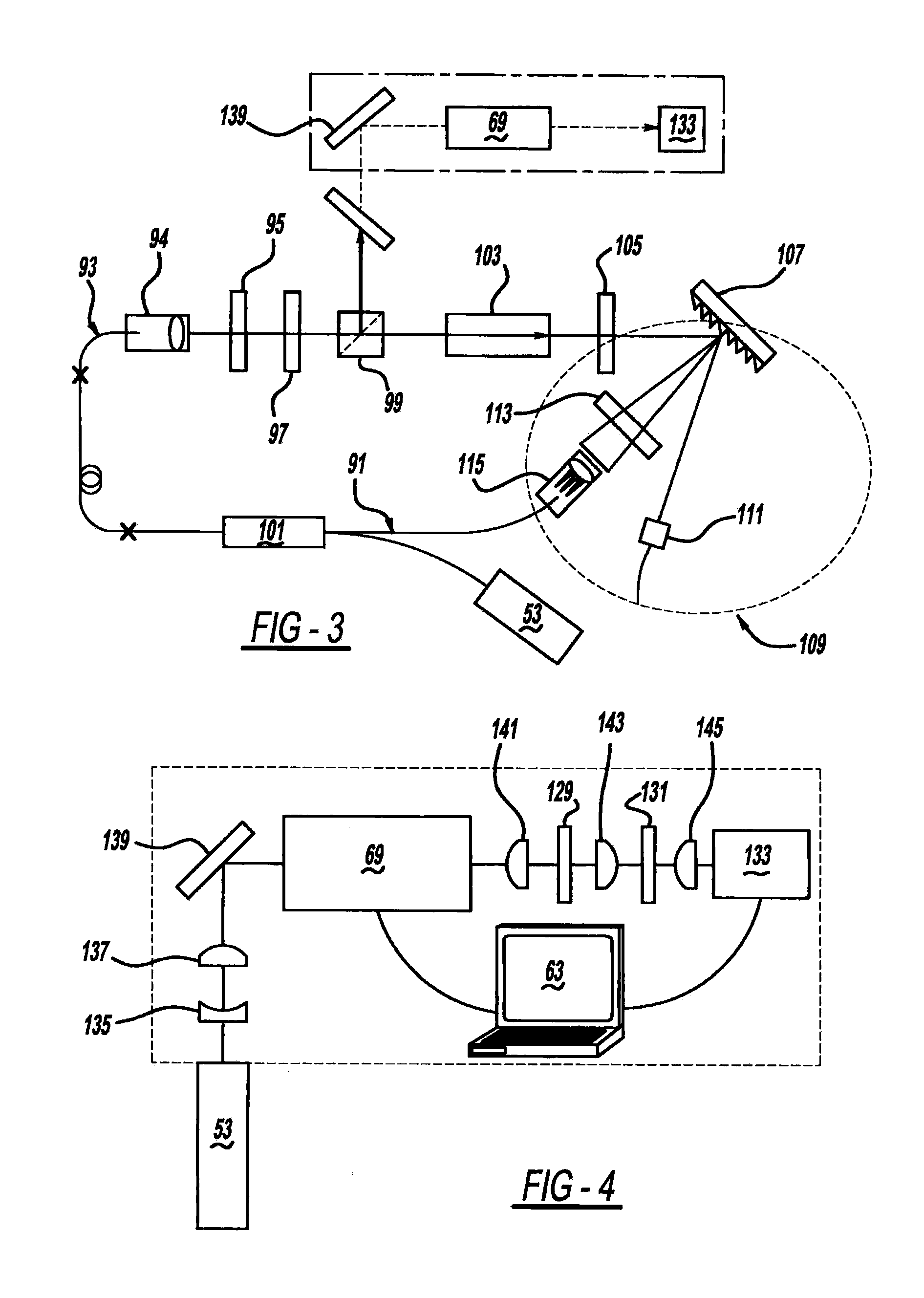Adaptive laser system for ophthalmic use
a laser system and ophthalmic technology, applied in the field of laser systems, can solve the problems of corneal tears, significant loss of opportunity costs, and delay in surgical procedures when the lasers are being fixed, and achieve the effects of reducing the possibility of necrotic tissue formation, reducing the amount of energy per pulse, and reducing the possibility of bubbles
- Summary
- Abstract
- Description
- Claims
- Application Information
AI Technical Summary
Benefits of technology
Problems solved by technology
Method used
Image
Examples
Embodiment Construction
[0053]Referring to FIG. 1-4, the preferred embodiment of an adaptive laser system or machine unit 51 for ophthalmic use of the present invention uses one or more ultrafast lasers 53 to operate on an eye 55 of a patient 57. Each laser 53 is preferably configured with a solid state, unamplified and air cooled diode-pumped Yb gain, in a fiber or hybrid free-space-fiber. The large bandwidth of the preferred laser arises through self-phase modulation within the cavity fiber or through pumping a photonic crystal fiber. This provides a relatively inexpensive laser assembly ideally suited for modularized and interchangeable use. The laser preferably emits a pulse intensity less than 5 μJ and a duration less than 150 fs, more preferably less than 100 fs, and even more preferably less than 50 fs, and for some uses less than 10 fs. The repetition rate is greater than one million pulses per second. This allows faster procedures. Similarly, it is desirable to reduce the energy per pulse to level...
PUM
 Login to View More
Login to View More Abstract
Description
Claims
Application Information
 Login to View More
Login to View More - R&D
- Intellectual Property
- Life Sciences
- Materials
- Tech Scout
- Unparalleled Data Quality
- Higher Quality Content
- 60% Fewer Hallucinations
Browse by: Latest US Patents, China's latest patents, Technical Efficacy Thesaurus, Application Domain, Technology Topic, Popular Technical Reports.
© 2025 PatSnap. All rights reserved.Legal|Privacy policy|Modern Slavery Act Transparency Statement|Sitemap|About US| Contact US: help@patsnap.com



